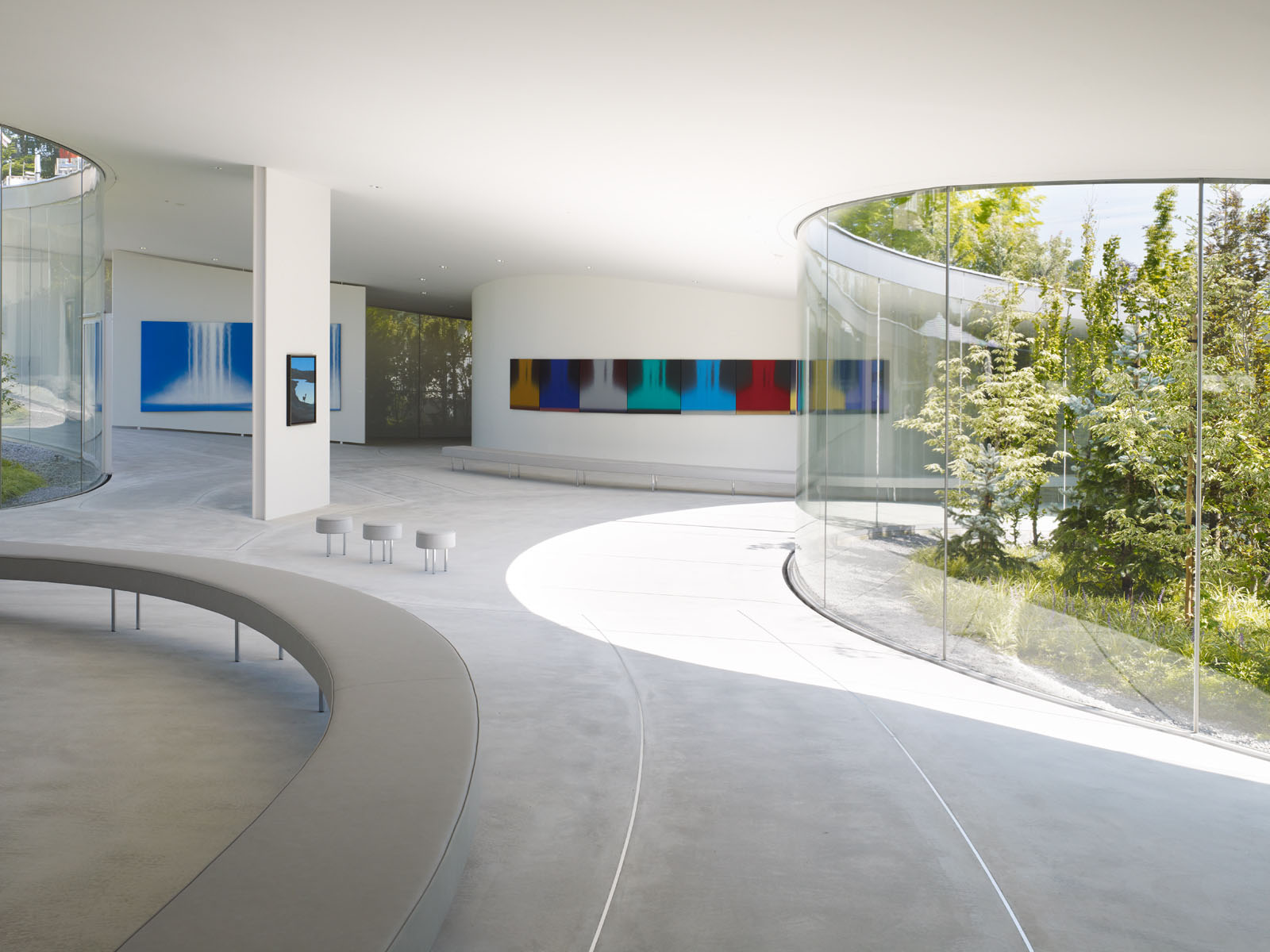The floor is made of white concrete, but it hugs the contours of the ground so closely that it could be satin cloth. And the roof, apparently anchored to the ground only by a curtain of glass at its perimeter, appears to float in mid-air like a giant magic carpet.
The Hiroshi Senju Museum Karuizawa, which opened on Oct. 10 in the mountain resort of Karuizawa, Nagano Prefecture, is named for the artist whose work it celebrates, but it is no less a monument to the accomplishments of its architect, Ryue Nishizawa.
Nishizawa, both working alone and with his partner Kazuyo Sejima in the firm SANAA, has gradually revolutionized museum architecture in this country. Right through the 1990s, such buildings had been all about heavy stone, concrete and steel forms — architectural expressions of the facilities' aspirations to authoritativeness. But that trend ground to a halt in 2004 when SANAA opened its single-story, glass-walled 21st Century Museum of Contemporary Art, Kanazawa. Since then, Nishizawa has created a series of light-as-air museums around the archipelago. The Towada Art Center opened in Aomori Prefecture in the north in 2008; the Teshima Art Museum opened on an island in the Seto Inland Sea, in the west, in 2010. And now, as though to fill in the gap in central Japan, we have the Hiroshi Senju Museum Karuizawa.



